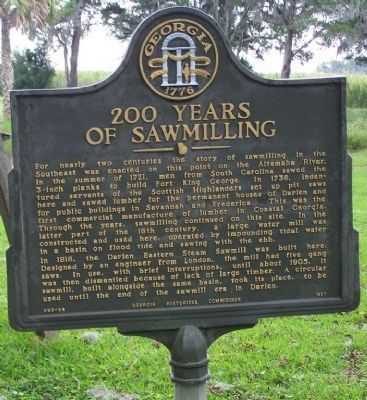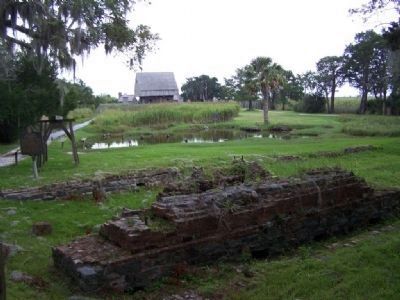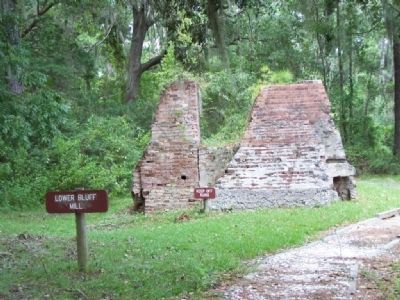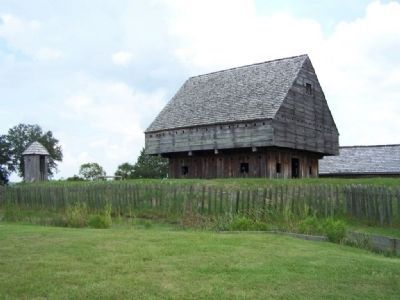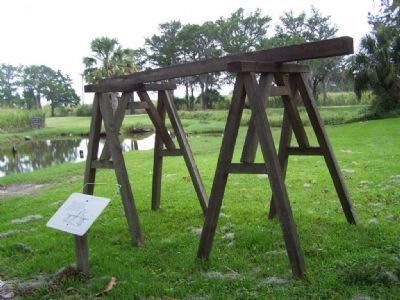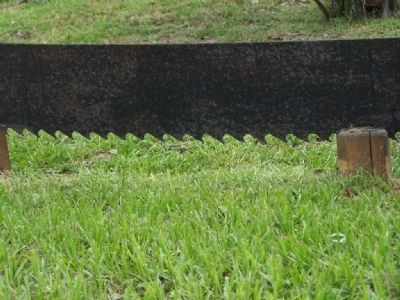Darien in McIntosh County, Georgia — The American South (South Atlantic)
200 Years of Sawmilling
In 1818, the Darien Eastern Steam Sawmill was built here. Designed by an engineer from London, the mill had five gang saws. In use, with brief interruptions, until about 1905, it was then dismantled because of lack of large timber. A circular sawmill, built alongside the same basin, took its place, to be used until the end of the sawmill era in Darien.
Erected 1957 by Georgia Historical Commission. (Marker Number 095-6B.)
Topics and series. This historical marker is listed in these topic lists: Colonial Era • Industry & Commerce • Notable Events • Settlements & Settlers. In addition, it is included in the Georgia Historical Society series list. A significant historical year for this entry is 1721.
Location. 31° 21.864′ N, 81° 24.956′ W. Marker is in Darien, Georgia, in McIntosh County. Marker is on Ft. King George Dr.. At Fort King George Historic Site. Touch for map. Marker is in this post office area: Darien GA 31305, United States of America. Touch for directions.
Other nearby markers. At least 8 other markers are within walking distance of this marker. How Steam Engines Worked (a few steps from this marker); Lower Bluff Sawmill (a few steps from this marker); Guale Indian Village (a few steps from this marker); To The Soldiers Of Fort King George (within shouting distance of this marker); Old Fort King George (within shouting distance of this marker); The Savannah Lumber Company (within shouting distance of this marker); Site of Early Spanish Mission (about 500 feet away, measured in a direct line); Birthplace of John McIntosh Kell (approx. 0.6 miles away). Touch for a list and map of all markers in Darien.
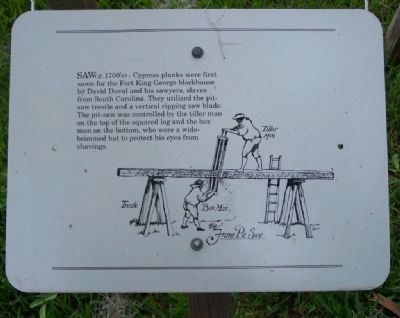
Photographed By Mike Stroud, 2008
5. 200 Years of Sawmilling
Saw (c.1700's) -
Cypress planks were first sawn for the Fort King George
blockhouse by David Duval and his sawyers, slaves
from South Carolina. They utilized the pit-saw trestle
and a vertical ripping saw blade. The pit-saw was
controlled by the tiller man on the top of the squared
log and the box man on the bottom, who wore a wide
brimmed hat to protect his eyes from shavings.
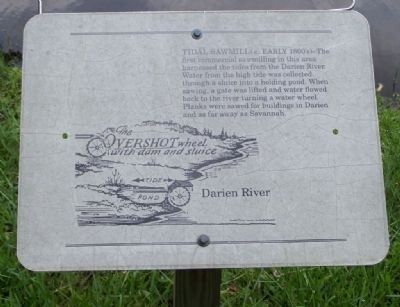
Photographed By Mike Stroud, 2008
7. Tidal Sawmill (c. Early 1800's) -
The first commercial sawmilling in this area harnessed
the tides from the Darien River. Water from the high
tide was collected through a sluice into a holding pond.When sawing, a gate was lifted and water flowed back to the river turning a water wheel. Planks were sawed for buildings in Darien and as far away as Savannah.
The Overshot wheel with dam and sluice.
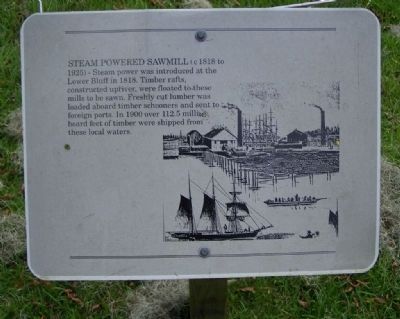
Photographed By Mike Stroud, 2008
8. Steam Powered Sawmill ( c.1818 to 1925) -
Steam power was introduced at the Lower Bluff in 1818.
Timber rafts, constructed up river, were floated to those mills to be sawn. Freshly cut lumber was loaded aboard timber schooners and sent to foreign ports.In 1900 over 112.5 million board feet of timber were shipped from these local waters.
Credits. This page was last revised on June 16, 2016. It was originally submitted on August 30, 2008, by Mike Stroud of Bluffton, South Carolina. This page has been viewed 1,576 times since then and 107 times this year. Photos: 1, 2, 3, 4, 5, 6, 7, 8, 9, 10. submitted on August 30, 2008, by Mike Stroud of Bluffton, South Carolina. • Kevin W. was the editor who published this page.
